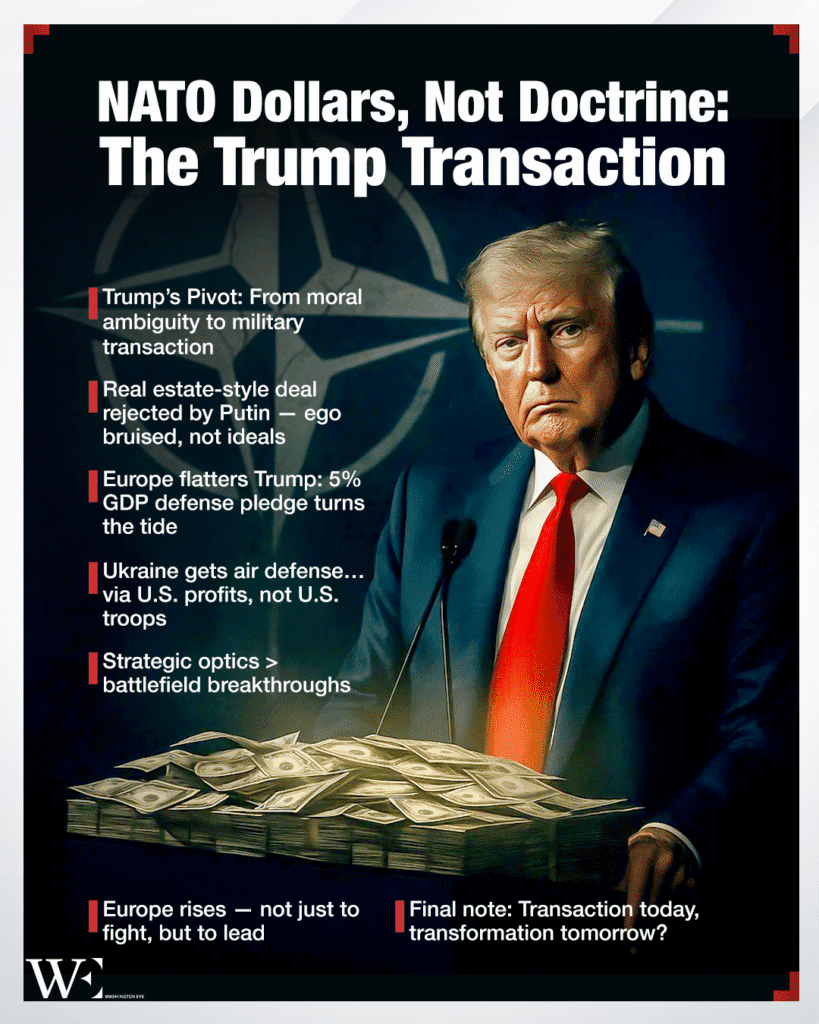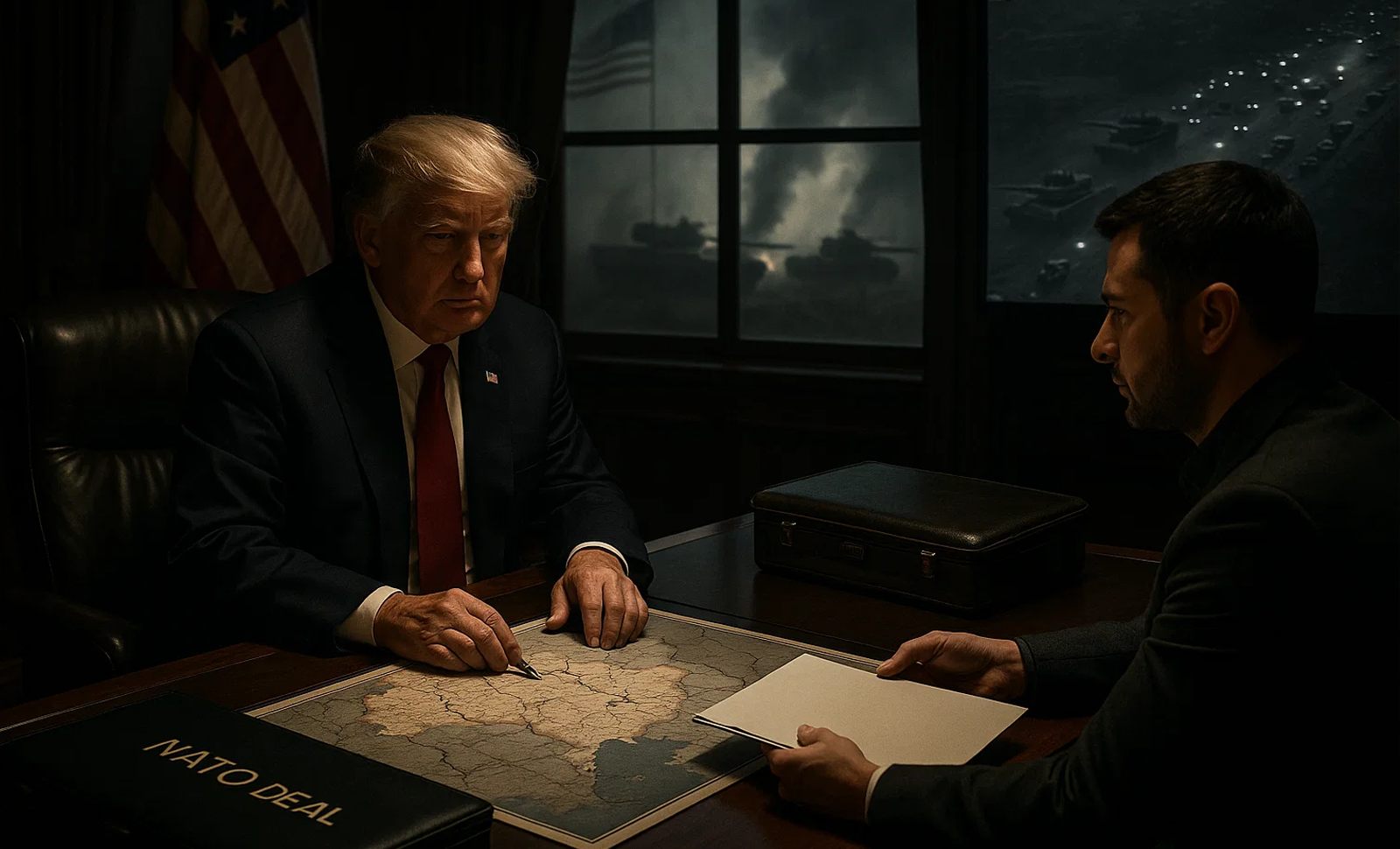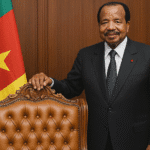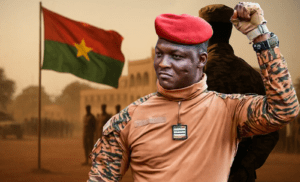President Donald J. Trump’s latest stance—pledging advanced air-defense systems to Ukraine and threatening “severe” economic consequences on Russia if no ceasefire emerges within 50 days—marks a sharp departure from earlier ambivalence. But this pivot is best understood as transactional rather than ideological, driven by realpolitik and financial optics, not a sudden alignment with democratic values.
From Real‑Estate Deal to Public Spat
True to form, President Trump initially attempted to negotiate peace through a “real-estate” lens—offering Vladimir Putin the opportunity to retain occupied Ukrainian territory in exchange for a ceasefire. Putin, steeped in Soviet-era worldviews and seeking full domination of Ukraine, rejected the proposal, diminishing Trump’s image as a dealmaker rather than igniting moral outrage over war crimes.
Trump’s evident frustration—his claim that Putin was “bullshitting” him—and the public snub to his deal speak less to outrage at violence and more to wounded ego, according to The Guardian.
NATO’s Wallet Win: Europe Pays, Trump Praises
What really turned the tide wasn’t strategy, but finance. Zelenskyy and Europe reframed Ukraine aid as a profitable investment rather than a cost. First came a controversial citizen to fund postwar reconstruction, granting the U.S. a theoretical 50% stake in Ukrainian mineral revenues—though Ukraine ultimately rejected the pact for lacking security sureties .
Then NATO nations pledged to increase defense spending to 5% of GDP within a decade—a move staged expressly to flatter Trump’s transactional ego. Delivered by Secretary-General Rutte, this spectacle culminated in Trump lauding Europe’s newfound strength: “Having a strong Europe is a very good thing”.
Now, NATO buys U.S.-made Patriot systems, replenishing European armories and funneling key systems into Ukraine—effectively delivering U.S. support at minimal cost to American taxpayers.
Strategic Value or Symbolic Gesture?
These Patriot systems provide much-needed protection for Ukrainian cities under Russian shelling but are unlikely to decisively alter the front-line dynamics. Russia continues to gain ground through attrition, tolerating massive casualties to exhaust Ukrainian resources.
The administration’s ultimatum—50 days to agree or face tariffs on Russia and its oil customers—serves more as diplomatic theatre than guaranteed policy. The complexity of sanctioning Russia’s trade partners like China and India raises doubts around enforceability.
Putin’s Position: Overplayed Confidence
Putin’s refusal to settle for Trump’s generous proposal—offering him territorial gains for ceasefire—may have been reckless. The Kremlin likely misjudged the payoff: rather than weakening NATO resolve, it spurred Europe to step up with both funding and procurement of military hardware.
However, refusing a deal allowed Putin to frame the war as an existential fight, leveraging nationalism and a war economy underpinned by state dominance and propaganda. Though more banal than omnipotent, his control remains firm—but fragile when faced with economic pressure and battlefield attrition.
Europe’s Moment: From Paycheck to Power Broker
Europe’s willingness to finance and acquire systems for Ukraine reflects deeper change. The Weimar+ initiative, NATO’s 5% pledge, and willingness to smartly wield alliance mechanisms indicate a shift toward genuine strategic autonomy. This isn’t just about Ukraine—it’s Europe’s quiet rebalancing of power within the transatlantic alliance, signaling less reliance on Washington’s unpredictable policy swings.
A Final Note: An Era of Transactional Alliances
Trump’s move is less a principled change than a deal driven by ego and economics. Although it brings Ukraine short-term defense relief, its durability depends on continued European financial commitment and Trump’s shifting calculations. Putin gambled on Trump’s pliability—and lost. The question now is whether Europe can build on this moment and sustain both military and geopolitical pressure long enough to tip the scales in Ukraine’s favor.
















